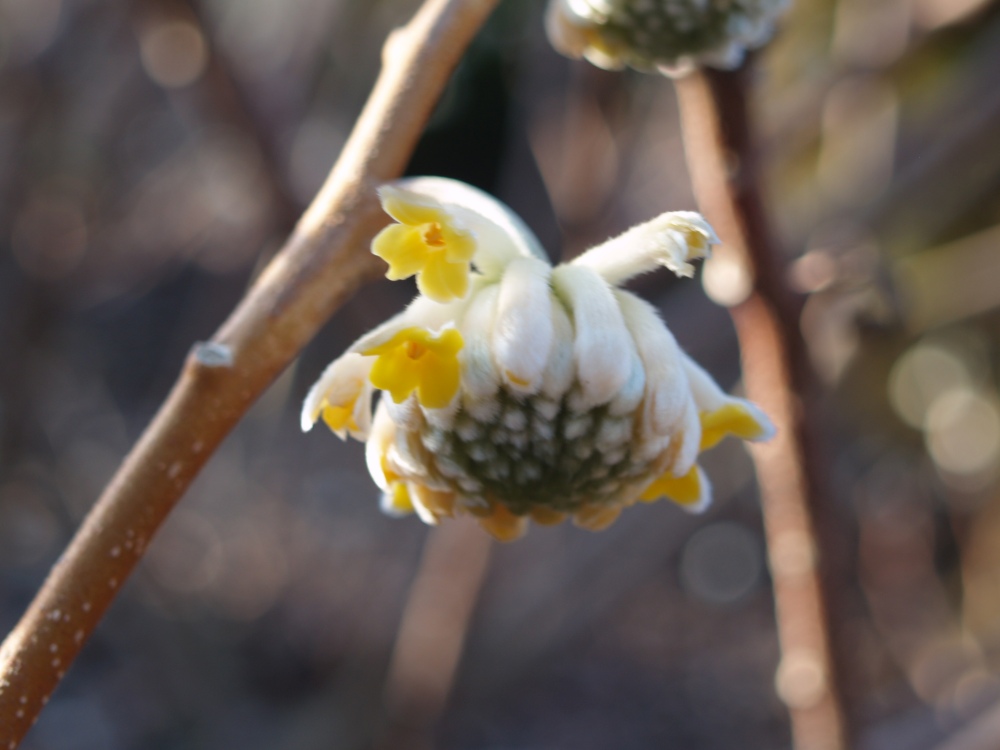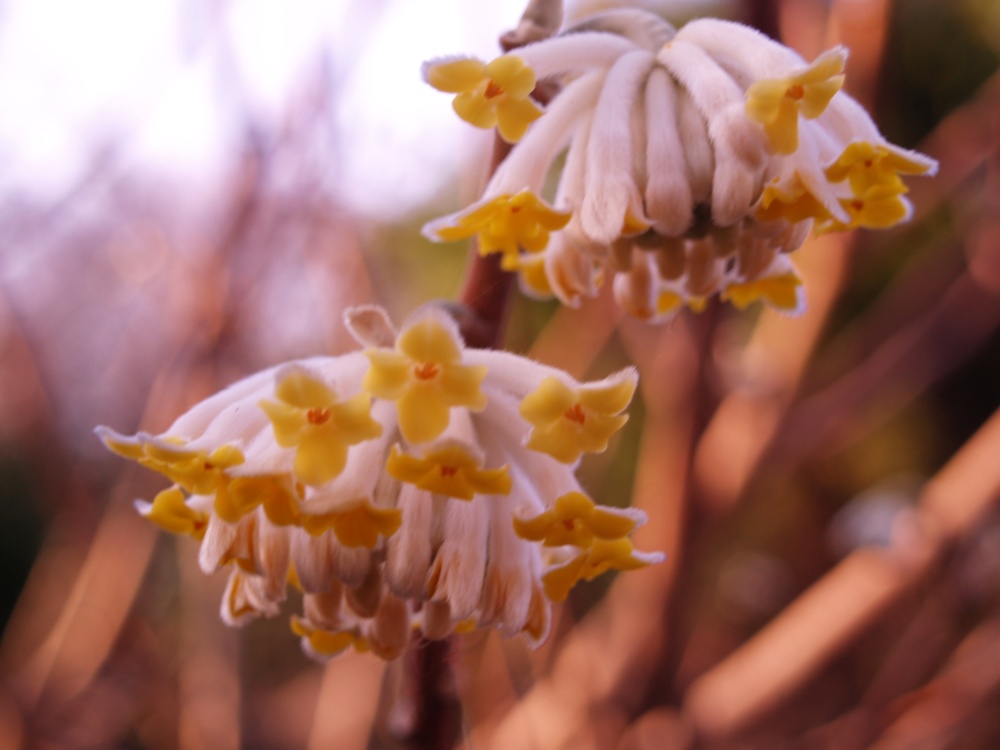Conversations about the weather are just about to wear me out. I find that I repeat myself a dozen times each day, and with slight variations I’ve had the same conversation for the past three months. Yes, the warm temperatures through the winter were unusual, and two weeks of seventy degree temperatures in March are odd. No, most plants will not be harmed by flowering or leafing early.
I’ve enjoyed the mild winter, but it’s time to get back to normalcy. I want my redbuds to flower at the start of April and the dogwoods to follow two weeks later, but buds of both are beginning to open in mid March. The tree lilac rushed through the budding stage and is almost fully leafed, and the growth of perennials and grasses are weeks ahead.
I watched the Chinese paperbush (Edgeworthia chrysantha) through this winter as I always do. The flower buds begin as white buttons that are obvious prior to the foliage dropping in November (above). Slowly through the winter the buttons grow larger. By the start of February the outline of the individual flowers is evident (below), and with a warm winter I was certain that I’d see the blooms well before the typical first week of March. 
Flowers of witch hazels and hellebores, snowdrops and early daffodils kept me occupied so that I was not disappointed when the paperbush didn’t bloom early. Then, on the last week of February there were the first signs of color as the buds separated very slightly into distinct tubular flowers with a few tipped in buttery yellow (below). Finally, a plant that is flowering precisely on schedule.
I don’t recall how or when I first became aware of the paperbush. It’s not commonly found in garden centers, and I don’t think I’ve ever seen one in a garden, though it can hardly be called rare. Books that I’ve read about plant exploration in China mention the plant, and feature small photos that barely do the paperbush justice. Most references mention its questionable cold hardiness, unremarkable foliage, and suckering habit, so I planted a handful of small shrubs with low expectations.
In a garden chock full of wonderful plants I’m hesitant to make such declarations, but paperbush has become one of my favorites. Watching the buds and early blooms helps me to pass the winter months, and the blue-green foliage is more notable than the credit it is given. I have witnessed a bit of suckering at the base of the plant, but none to be concerned about and I consider paperbush to be a very well mannered shrub. In five years the small plants have grown to a dome shaped four feet tall and seven or eight feet in width, and they’ve handled temperatures just below zero with no problems.
The flowers are nothing short of magnificent, as fine as any plant in the garden. The umbels consist of numerous white tubular flowers with flared tips that have been dipped in buttery yellow. On small plants there will be a flower at the end of every branch tip, but on larger shrubs there are multiple flowers at the tips, and more along the length of the branches. Paperbush is related to daphne, and its fragrance is similar to the winter daphne blooming in the front garden.
I cherish the winter blooming plants in the garden, and even in this too often talked about, warmer than ever winter, when several plants flowered through January and February, the paperbush is something special.
